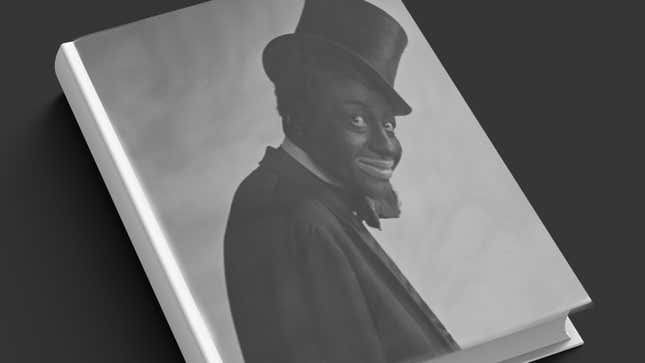
I always knew Mrs. Bookman was wrong.
Mrs. Bookman talked in low but energetic whispers, smelled like a pocketful of nickels and I assumed—because she was the town librarian—that she had read every book in the Hartsville Public Library. I adored Mrs. Bookman. (Looking back, I honestly think she used a pseudonym. Then again, if you spent most of your time around my Aunt Jannie, you’d think the president’s real name was “That Lying Racist in the White House.”)
One summer afternoon, when I was around 12 years old, I was perusing books on paranormal activity. (There was a point in my youth where I was obsessed with unexplained mysteries. I just knew the Loch Ness Monster was real and believed I could trigger my extrasensory perception if I squinted hard enough and focused my mind.) As she passed by, Mrs. Bookman turned towards me, smiled and enthusiastically whispered:
“You know what they say, young man: ‘You can’t judge a book by its cover.’”
It was, at that point, the stupidest thing I’d ever heard. I had so many questions. How else was I supposed to judge a book before I read it? What other criteria should I use until my ESP kicked in? Was she ridiculing my still-undeveloped powers of premonition? And who the fuck is “they”?
But, according to book retailer Barnes & Noble, I was right and Mrs. Bookman didn’t know what the hell she was talking about.
The bookselling behemoth recently announced that their flagship Fifth Avenue location will partner with publishing giant Penguin Random House to celebrate Black History Month and highlight diversity. And if you assumed this news meant B&N planned to shine a spotlight on black authors or even books about black people, you’re wrong. Instead of focusing on the content of books, they had a different, more Bookman-like approach:
They put their books in blackface.
Seriously. To honor black people, they decided to showcase a selection of white-centered literary tomes. But, instead of acknowledging that the books were written by white people who wrote about white people, these genius marketers simply slapped a diverse selection of black faces on the books’ covers.
According to Publishers Weekly, Penguin Random House and Barnes & Noble Fifth Avenue have designed “Diverse Edition” covers for “twelve classic young adult novels.”
“Each title had five culturally diverse custom covers designed to ensure the recognition, representation, and inclusion of various multiethnic backgrounds reflected across the country,” AMNY reports. “The new covers are a part of a new initiative to champion diversity in literature.”
The collection of not-so-African American literature featured unapologetically non-black authors such as Lewis Caroll (Alice in Wonderland), William Shakespeare (Romeo and Juliet) and James Matthew Barrie (Peter Pan). Other “classics” that will be highlighted for detailing the white experience during BHM include:
- Moby Dick
- The Secret Garden
- Emma
- The Wizard of Oz
- Peter Pan
- Treasure Island
Apparently, black people don’t write “classic” books.
To be fair, Alexander Dumas, who wrote Three Musketeers and The Count of Monte Cristo had a black grandmother. Both books made the list, which should count for something. Richard Wright’s Native Son is probably too real, as is Toni Morrison’s Song of Solomon or Lorraine Hansberry’s A Raisin in the Sun. Maya Angelou’s young adult, coming-of-age tale I Know Why the Caged Bird Sings isn’t exactly for young (white) adults, while books about serial killers (Dr. Jekyll and Mr. Hyde, which is on the list) or reanimated cadavers (Mary Shelley’s Frankenstein) must be much more palatable for white eyes.
Of course, there will always be people who complain. In this case, some people were perplexed as to why Barnes & Noble thought it was a good idea to celebrate Black History Month and diversity by ignoring blackness, history, and diversity.
Because the Hartsville Public Library didn’t have any manuals on incorporating whiteness into my telepathic powers, my ESP isn’t very “diverse.” Therefore, I can’t proclaim to know the inner workings of the Caucasian mind. On the other hand, it is possible that Barnes & Noble or Penguin Random House assumed that only white people wrote “classic” books.
Let’s be honest. This is just white people continuing the age-old tradition of white people-ing. For them, diversity is just a performative promotional tool that satisfies their diversity requirements by acknowledging that black people actually exist. Most companies don’t care to be diverse. They want to look diverse. Or, perhaps, when they made this decision, their “black” had the day off.
I know I might be judging these idiots by their covers but I’m also willing to help.
Just in case Barnes & Noble, Penguin Random House or any major bookseller is looking for a chief diversity officer, I know a very experienced, slightly coin-scented woman who knows covers don’t mean shit.
She would be so disappointed in me.

